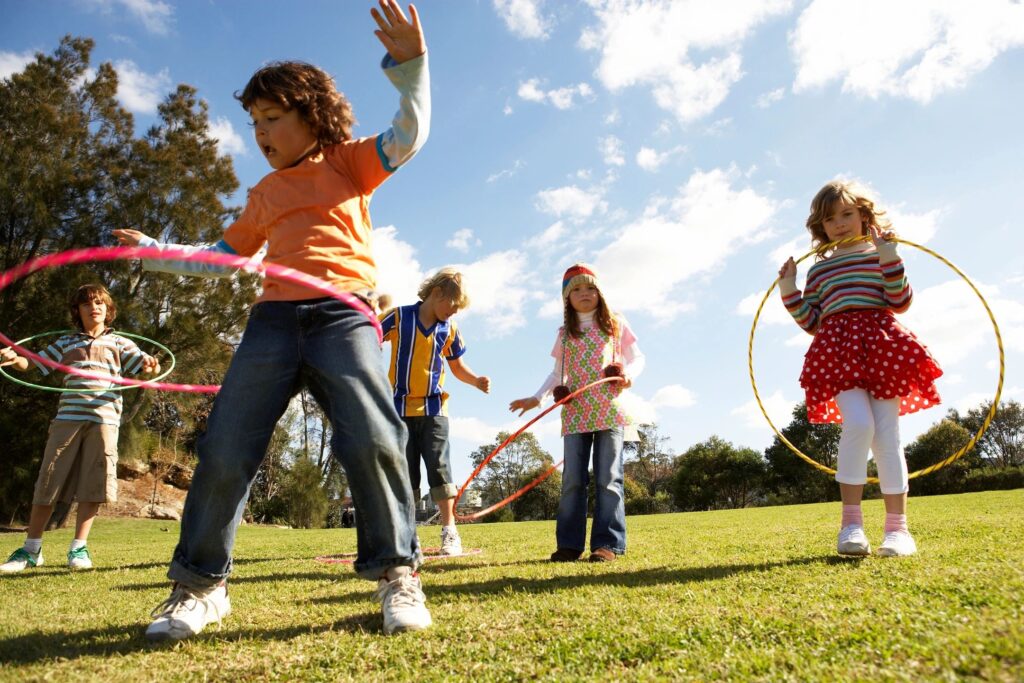Meigs Health Today: How to Motivate Your Child to Exercise


Meigs Health Today: How to Motivate Your Child to Exercise
By Juli Simpson, RN, BSN, LSN Maternal & Child Health, Program Director at the Meigs County Health Department
Sometimes, it can be a real challenge for kids (and adults) to get enough daily activity. Some days, I feel like there is no way I can add in one…more…thing. With busy family work schedules, school demands, and extra-curricular commitments, trying to fit in ‘exercise’ can feel so overwhelming. But it doesn’t have to! It doesn’t even have to be called ‘exercise’! That word itself can feel intimidating sometimes. It may be best to think about it more in terms of just being ACTIVE. Being physically active has so many important benefits for our bodies, young and old. Strong muscles and bones, healthy weight, reduced risk of certain diseases, better sleep and mood, and even better attention span are just a few of these benefits that regular physical activity can do for us.

The best way for kids (and adults) to get physical activity is by incorporating it into a daily routine, into things they’re already doing, that are age-appropriate, and things that are interesting or fun for their fitness personality. Kids won’t do something long-term that they don’t enjoy, and if it’s not age-appropriate, the child will easily get bored, frustrated, or overwhelmed.
So, what in the world is a ‘fitness personality’? Kids, just like adults, are all different. Some may be nonathletes, some casual athletes, and some natural athletes. Likewise, there are different ways to motivate and incorporate physical activity into all types of personalities. Finding the right activities for the personality type—both kids and adults—means a much better chance of those activities becoming something they’re not overly intimidated by and something they’ll actually enjoy doing regularly.
For example, a nonathlete that has little interest in sport related events will likely not be comfortable playing on a sports team and could get very discouraged if pressured to do so. It is important for adults to stay open-minded and patient with kids of this personality type. It’s OK if it takes several tries before something ‘sticks’. Remember that there are many non-sport things to do for exercise (see below). With that said, a non-athlete is much more likely to need an adult’s help and encouragement to get active and stay at it. An adult with a positive attitude can help guide a child that is reluctant to be active.
On the flip side, a child with an athletic personality will likely not be content by just going on walks with you a few times a week. This personality type usually gravitates toward sports and competitive settings. Even though physical activity is naturally included in practices/games for these kids and you may not need to add in much extra activity at home, it is still important to encourage these kids to stay active in their free timeand not solely depend on a sport to stay fit. Youth sports don’t last forever. Even kids that are involved in sports can run the risk of getting way too much screen time and being sedentary.
The ‘casual athlete’ is somewhere in between. This could be a child that is somewhat interested in being active, but may be happy with just shooting hoops on the playground or by being an occasional player in a recreational (not a star player role) league. This type of kid can get easily discouraged and intimidated if the environment is too competitive or intense, so finding the right team or the right league can be important.
Regardless of which ‘fitness personality’ a child fits into, or maybe even somewhere in between, there are some easy things families can do to help keep everyone’s fitness on track and motivate each other to stay active. There are so, so many ideas! Here are just a few to get you thinking:
- When going to the store, park in the spot farthest away. Thekids have to walk in with you anyways, so everyone might as well get in some extra steps for the day! Walk whenever, and wherever you can.
- Set up your child’s electronic device with a screen time limit. If your family views screen time as a privilege, you can make the agreement that once a limit is up, the child has to do some activity—or the child can earn some screen time by doing an activity.
- If you have pets, part of the child’s daily responsibilities may be to walk those pets.
- Many digital watches can be programmed to send an alert when a person has been sitting too long and not active withing a certain amount of time (this one is good for adults with desk jobs also!). These watches usually have a pedometer built in too, so one can track how active they’ve been throughout the day.
- If your child is a gamer, there are several video game options out there that use dance, exercise, and similar movements as part of the game. These are especially fun when adults try the game with the kids. Lots of laughs guaranteed!
- Anytime a commercial/ad break comes up, you can make it into an ‘activity break’ for the family—for example, everyone has to do 20 jumping jacks (many choices here!) before the show comes back on. If someone doesn’t, that person has to do the dishes (or some other agreed upon household chore).
- Take the stairs instead of the elevator anywhere that it is an option and reasonable for the child’s age.
- Walking/hiking, swimming, skating, bicycling, golf, gymnastics, martial arts, dance, running & jogging, frisbee, yard work, house work, table tennis, trampoline, tag, jump rope, 4-square, FREE PLAY, shooting basketball, whiffle ball, backyard volleyball, team sports, archery, playing catch,kayaking/canoeing, hunting & fishing, playing at the park, gardening and farming, etc.
- Yoga or fitness classes. Some of these cost money, but there are also many free follow-along videos on the internet for these activities, many specifically for kids! There are also many ideas out there for zero-equipment movements that use solely body weight for exercise (air squats, pushups, etc.). Start slow and work your way up. Do these things together with you kids (age-appropriate) regularly and you will both be amazed at how you improve as time goes on.
Kids learn by example, and they look to adults for guidance and encouragement, in all areas—not just as it relates to exercise. Be active yourself and support your kids’ interests. Try some of these ideas alongside your child. Who knows? You may even find something you didn’t even know you liked. When healthy physical activity habits are started early in life, kids will come to regard it as a regular and fun part of everyday routine. But it is never too late to start!








